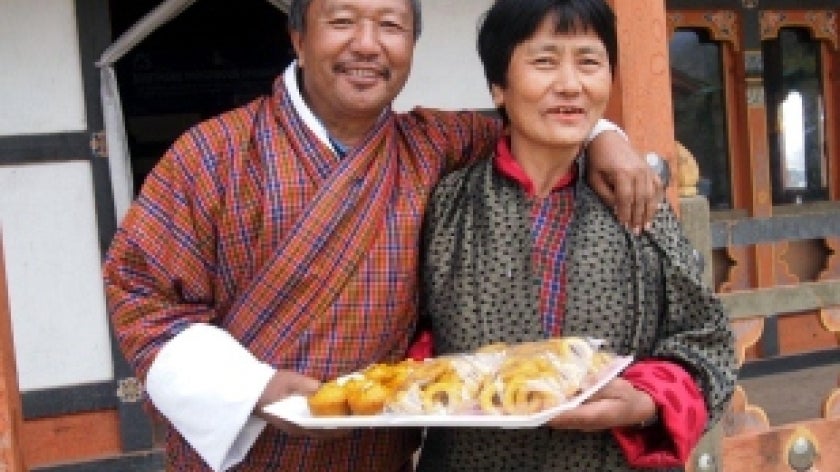
Big Bang for the Buck !
Conserving Traditional Varieties with Modern Opportunities
By Sutharin Koonphol
One of the happiest moments in Phurba’s life was cooking traditional buckwheat noodles and pancakes for the Royal Wedding in 2011.
“It was very special to see the King and the Queen in real life and to actually do something for them. I was so proud that our local buckwheat was valued by others and placed on the royal table.”
For her, the revival of this once virtually abandoned traditional crop has expanded her world, previously limited to working in the field and tending her family.
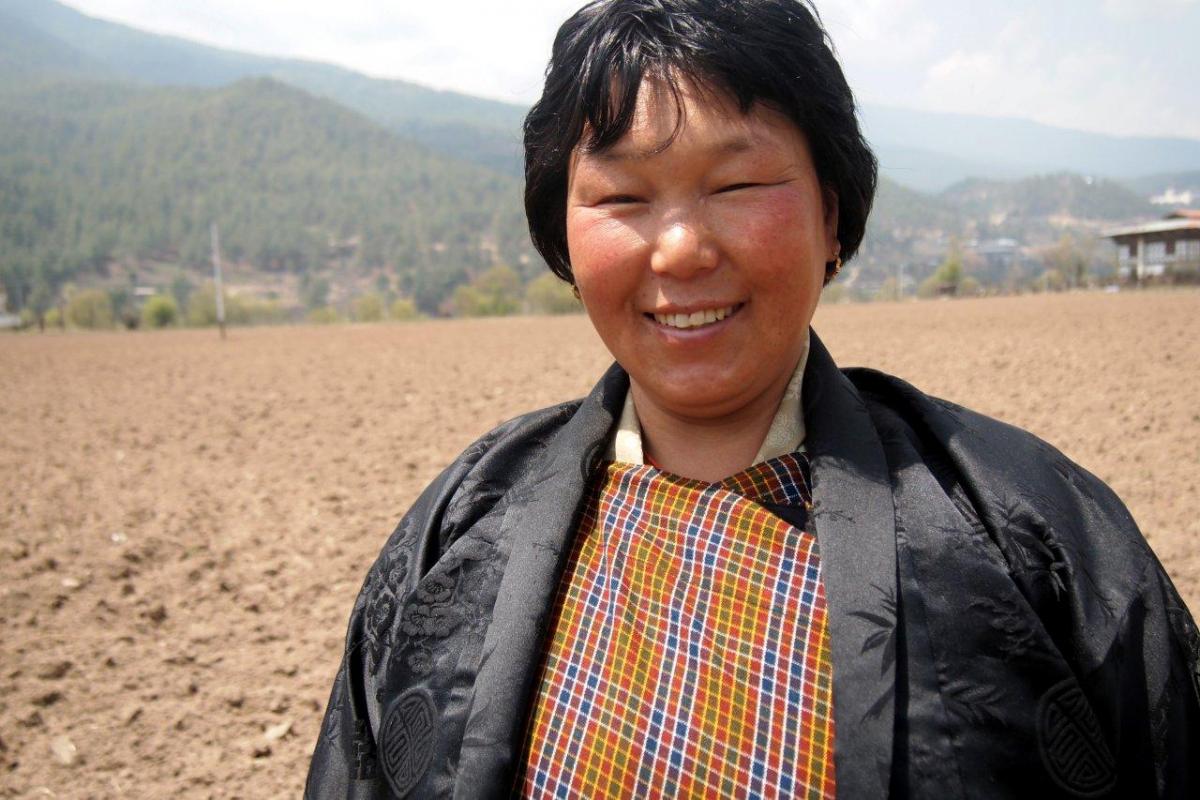
Phurba and her freshly prepared field for the next crop of buckwheat. The buckwheat is normally grown in April - May and harvested in October – November
In Bumthang Valley, Central Bhutan, Farmers had abandoned buckwheat for other cash crops such as potatoes when access roads built 25 years before, opened the area to trade.
Bhutan’s wealth of national agro-biodiversity underpins the country’s food security. Much of this diversity is held in traditionally cultivated varieties of crops, such as buckwheat. Alarmed by the decline of buckwheat production, Phurba and 14 other farmers formed the Bumthang Buckwheat Group in 2009, supported by the District Agricultural Office and the National Biodiversity Centre.
New Skills and Market Opportunities
With the US $921,985 support of the UNDP/GEF ‘Integrated Livestock and Crop Conservation’ Project, and the National Biodiversity Centre, the group worked on value-added product development and diversification; cakes, biscuits, and pizzas, as well as existing products such as buckwheat noodles and pancakes. The group opened a shop in 2011.
The project supplied baking equipment, skills training and health benefit information. Buckwheat prices rose three-fold over five years and sales of flour, cakes and biscuits now bring the group a steady income. They yield up to US $60 per day in the peak season from June to August.
The group has expanded to include 30 additional contract farmers who supply buckwheat grain. More expansion is planned to meet growing market demand.

The two varieties of buckwheat commonly grown in Bumthang: sweet and bitter
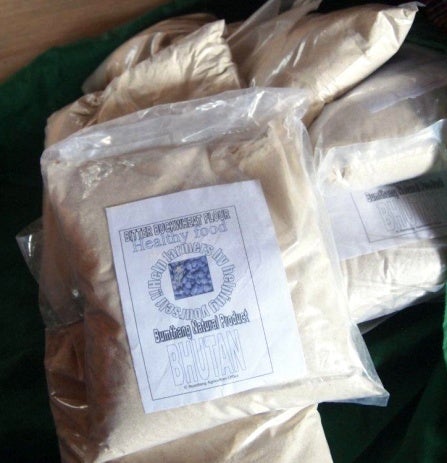
The buckwheat flour, one of the best-selling products at the outlet
With support from the project and district agricultural office, Phurba and her friends traveled to biodiversity fairs around the country to promote their buckwheat products. They also provided training and shared their results with other farmer groups.
The group has developed 18 products, including buckwheat husk pillows. Waste not want not - previously buckwheat husks were discarded but the new pillow contents provide income and are believed to help fight high-blood pressure, facilitate good sleep, and may even prevent snoring. Buckwheat wine is the next plan and has “good market potential,” according to Sonam Tobgay, Chairman, Bumthang Buckwheat Group.
To create opportunities for more farmers, the project also created a community seed bank to conserve buckwheat and other traditional crop varieties of the whole Dzongkhag area.
“We distributed buckwheat seeds for free to those farmers wanting to grow the crop again and plan to introduce a price guarantee scheme,” noted Gaylong, the District Agricultural Officer.
Agrobiodiversity for the Future
Bumthang’s buckwheat exemplifies the biodiversity wealth of Bhutan and its close relationship with local livelihoods. Buckwheat is just one of several traditional crop and livestock varieties the project tried to conserve through supply chain development in 18 sites spanning 8 districts (others promoted under this effort included traditional varieties/breeds of barley, soybean, maize, rice, yak, poultry, pigs, sheep, Nublang -a local cattle breed - and horses). The project targeted some of the poorest communities, living in the most remote regions of Bhutan.
The project also expanded the National Gene Bank to hold a vast number of crop and animal genetic resources for research and long term use, resulting in enhanced national capacity for ensuring crop and breed diversity.
According to traditional Bhutanese belief, buckwheat is one of the nine essential grains that Lord Buddha gave to mankind. Properly managed they will to continue as foundations for realizing high Gross National Happiness.
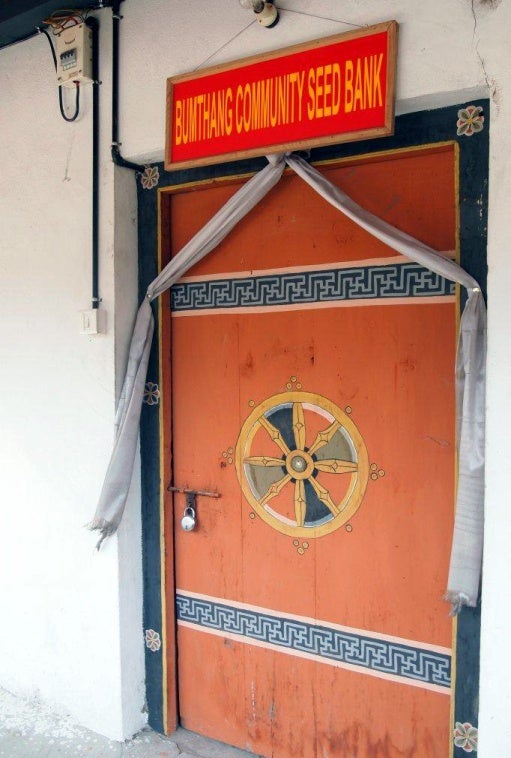
Various traditional varieties in Bumthang are now kept in the community seed bank
Security and Sustainability
It is not all about profit; but also a sense of pride and financial security. Farmers are not shifting completely from cash crops, but are diversifying their income through new market opportunities based on traditional crops. The market price of potatoes fluctuates beyond their control but as a group they can control the market price of buckwheat and its products.
The group established a joint savings account with seed money. Individual members provided an endowment in the beginning to the amount of US$ 1,700 collectively. In 2012, each member received USD 264 in profit. The endowment also provides loans to members in times of need and the group plans to sponsor schooling for local under privileged children.
For Phurba, the group is like a second family, with shared hard work and profits. It provides a social safety net and self-esteem: “I learned a lot of new skills like baking and accounting, and I got to travel to different places to showcase our buckwheat products. I never dreamt of such an opportunity before,” said Phurba.
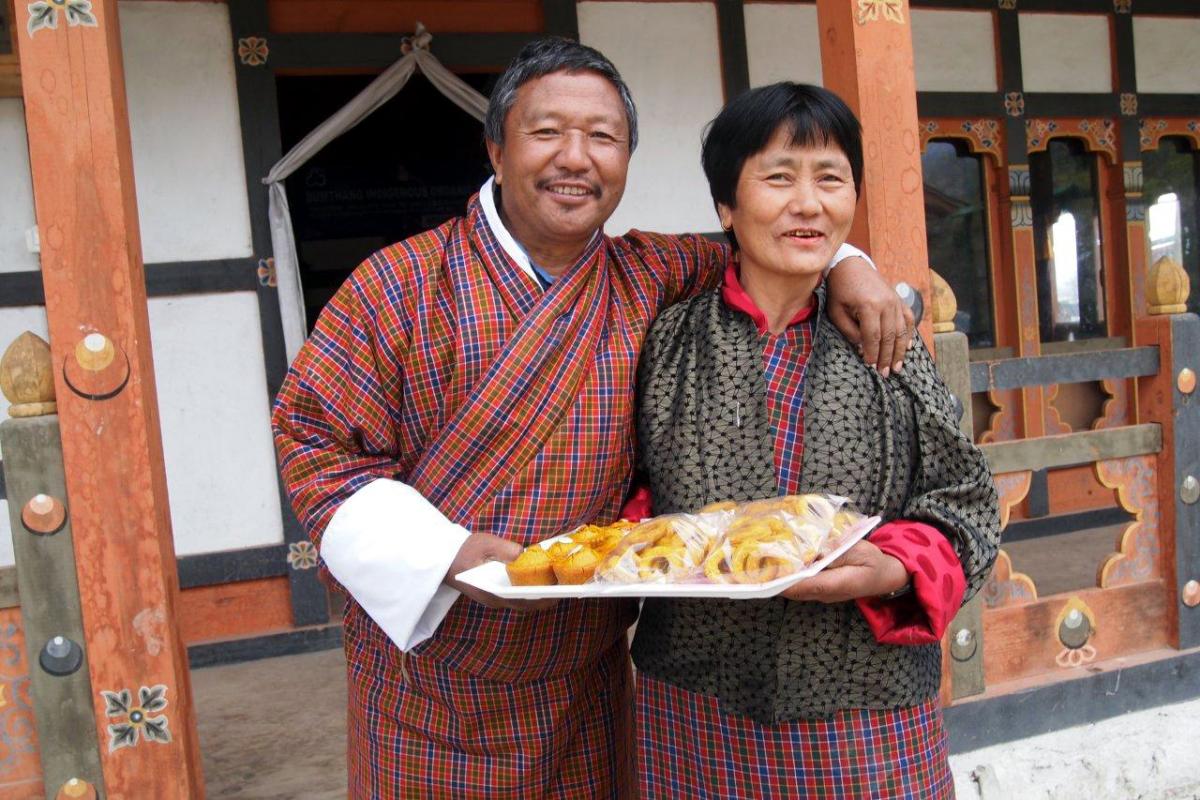
Sonam Tobgay, Chairman of the buckwheat group, with his wife - Nazom, and the buckwheat goodies
Photo: © Sutharin Koonphol